Last Updated on March 12, 2025 by Packoi Team
Learn about the disadvantages of plastic packaging, such as non-biodegradability and environmental pollution, and discover the benefits of alternatives like paper packaging. Packoi is a leading packaging company committed to sustainability and can help make your business stand out.
The packaging industry is continuously evolving, and so are the materials used for packaging. Paper and plastic are the most commonly used packaging materials, but which is better?
In this blog post, we will compare plastic and paper packaging and paper versus plastic for packaging, their advantages and disadvantages, potential environmental impacts, and how to choose the more sustainable option for packing materials.
What Is Paper Packaging?
Paper and cardboard packaging is made from renewable materials, such as wood pulp, but paper and cardboard are widely used for packaging products like food, cosmetics, and medicines. Paper and cardboard packaging can be in paper and plastic in boxes, bags, and cartons.

What Are the Advantages of Paper Packaging?
1. Renewable Material:
Paper is a renewable material made from trees, which can be replanted to make paper mills replace the ones used for paper production.
2. Biodegradable:
Paper is biodegradable, which means it can decompose naturally in the environment. Do you want to know the reasons why we should choose biodegradable packaging? Biodegradable Packaging will tell you.
3. Recyclable:
Paper is recyclable, meaning it can be recycled content reused to make virgin paper to create new products.
4. Cost-effective:
Paper is relatively inexpensive compared to other packaging materials.
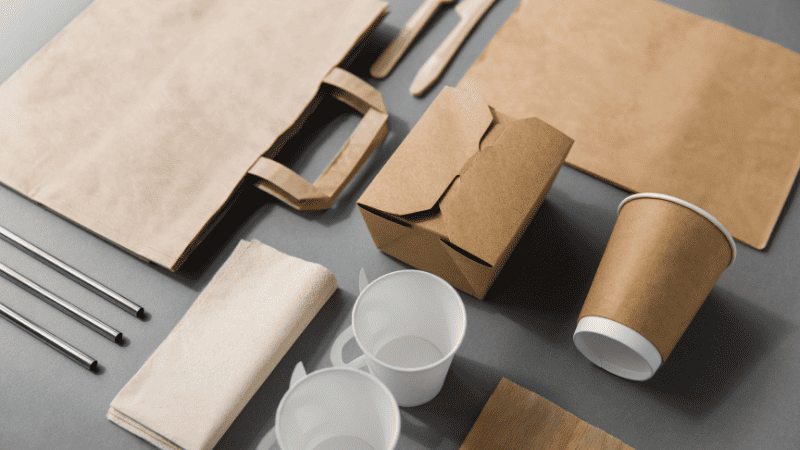
What Are the Disadvantages of Paper Packaging?
- Durability: Paper bag packaging is not as durable as plastic bag packaging and the paper bag can easily tear or get damaged.
- Unsuitable for Some Products: Paper packaging may not be suitable for some products that require airtight or moisture-resistant packaging.
- Production: The production of paper packaging requires cutting down trees, which can lead to deforestation and habitat loss.
What Is Plastic Packing?
Plastic packaging and plastics, plastic production is made from petroleum-based materials, such plastics as polyethylene and polypropylene.
Plastic packaging and plastics are widely used for packaging products like food, beverages, and personal care products. Plastic packaging and plastics can be in bottles, containers, and bags.

What Are the Advantages of Plastic Packaging?
1. Durability:
Plastic packaging is highly durable and can withstand the rigors of transportation and storage.
2. Versatility:
Plastic packaging can be molded into different materials, shapes, and sizes, making it versatile for different products.
3. Lightweight:
Plastic packaging is lightweight, reducing the cost of transportation and its carbon dioxide footprint.
4. Airtight and Moisture Resistant:
Plastic packaging can be more airtight and moisture-resistant than paper and cardboard vs. plastic, making it suitable for a wide range of products.
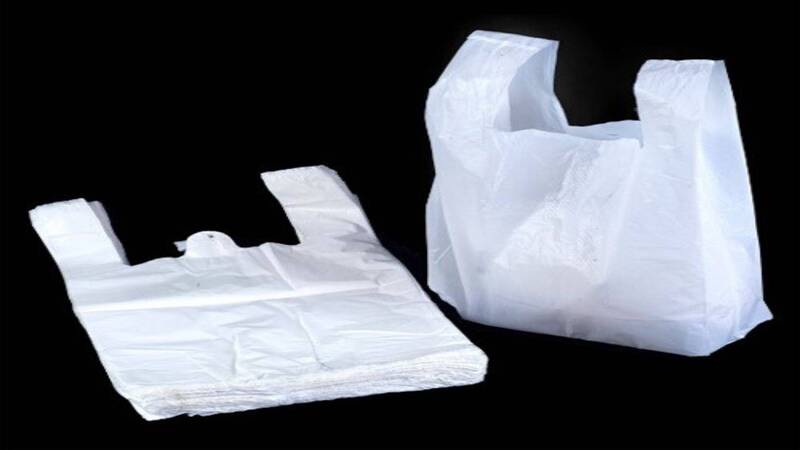
What Are the Disadvantages of Plastic Packaging?
1. Non-biodegradability
Plastic packaging is a significant contributor to waste accumulation in the environment. Unlike paper and other natural materials, plastic bag takes hundreds of years to decompose, causing harm to wildlife, waterways, and ecosystems.
The non-biodegradability of plastic packaging leads to the accumulation of waste in the environment and can have negative effects on marine life, pollute water sources, and damage the soil.
2. Environmental Pollution
Releasing harmful chemicals from our plastic bags and packaging into the environment is another significant disadvantage. When a plastic bag is not disposed of properly, it can release harmful chemicals, causing pollution and habitat destruction.
These toxic chemicals can enter the food chain and cause health problems for animals and humans. Plastic bags and waste can also clog drainage systems, causing flooding and other environmental problems.
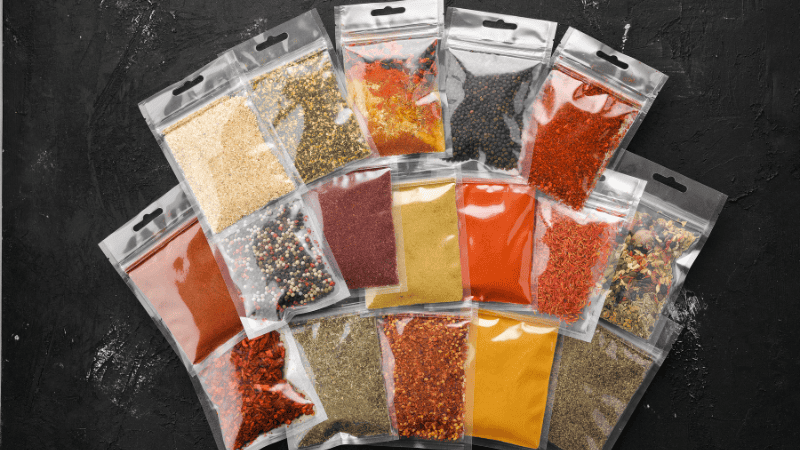
3. Unsustainability
The production and water consumption of plastic packaging requires the use of non-renewable resources such as fossil fuels, like natural gas and petroleum, which is unsustainable.
Using fossil fuels, extracting and using fossil fuels, and refining petroleum involves significant energy consumption and releases greenhouse gases, contributing to climate change.
The production of plastic packaging also requires a large amount of water, putting a strain on local water sources and leading to water scarcity in some areas.
4. Littering and Unsightly Environments
Plastic packaging can also contribute to littering and unsightly environments. Plastic waste can accumulate in landfills, oceans, and other places, causing harm to the environment and detracting from the beauty of our surroundings.
What Are the Differences Between Paper Packaging and Plastic Packaging?
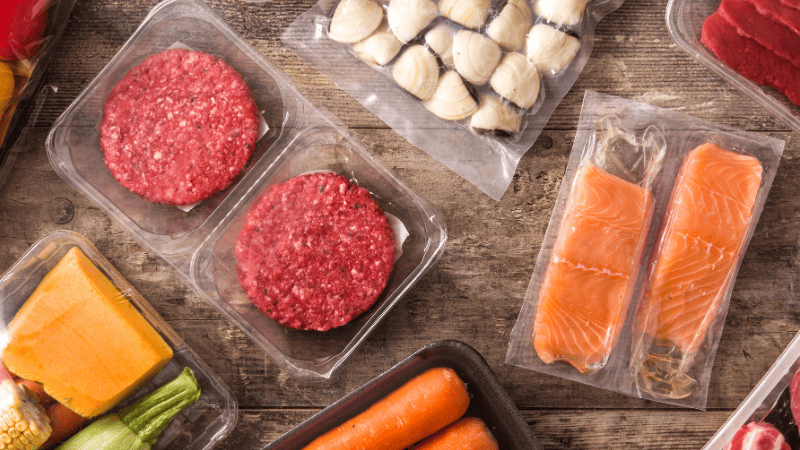
To make a clear comparison between flexible paper packaging and flexible plastic packaging, the following table summarizes the advantages and disadvantages of each type of flexible packaging used.
Regarding packaging materials, paper, and plastic are two of the most commonly used options. Both materials have advantages and disadvantages, which can impact their suitability for different applications.
Durability
Durability is one factor that sets paper and plastic packaging apart. Paper packaging is generally less durable than plastic and can tear or break down more easily. In contrast, plastic packaging is highly durable and can withstand various environmental conditions.
Biodegradability
Biodegradability is another important factor to consider. Paper packaging is biodegradable, meaning it can break down naturally over time, leaving no harmful or toxic waste anywhere behind.
On the other hand, plastic packaging is not biodegradable and can take hundreds of years to decompose.

Recyclability
Both paper bags and plastic packaging are recyclable, which makes them more environmentally friendly than single-use paper-based packaging alone.
Recycling packaging is relatively easy and can be done by most recycling facilities while recycling single-use plastic bags can be more complex due to the various types of plastic used in packaging.
Cost-Effectiveness
Cost-effectiveness is an important consideration for many businesses, and both paper and plastic packaging can be relatively inexpensive. However, the cost of each material can vary depending on factors such as the size and design of the packaging.
Versatility
Versatility is another factor that sets paper and plastic packaging apart. Paper packaging is limited in terms of its versatility, as it can be difficult to create certain shapes or designs. In contrast, plastic packaging is highly versatile and can be molded into almost any shape or size.
When it comes to weight, both paper bags and plastic packaging are lightweight. This can make them ideal for shipping and transporting products.
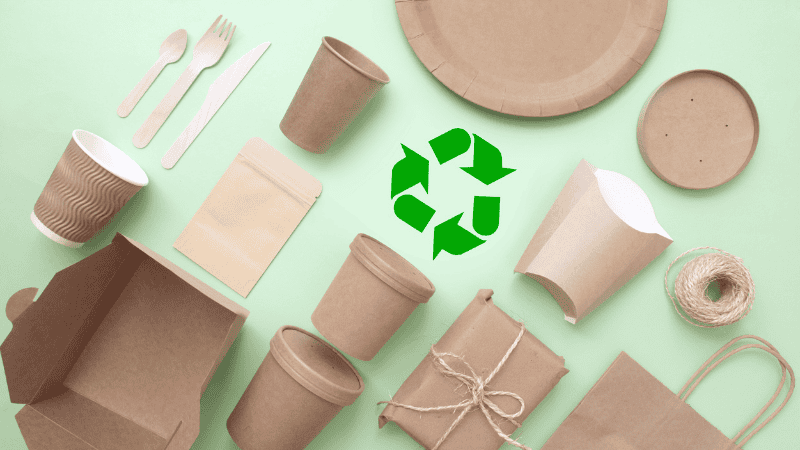
Airtightness and Moisture Resistance
Finally, airtightness and moisture resistance of plastic plastics are also factors to consider. Paper packaging is unsuitable for airtight or moisture-resistant products, while plastic packaging is highly suitable for these applications.
Overall, both paper and plastic packaging have their advantages and disadvantages. While paper packaging is biodegradable and recyclable, it may not be as durable or versatile as plastic packaging.
Conversely, plastic packaging is highly durable and versatile but has significant environmental impacts due to its non-biodegradable nature.
Businesses and consumers need to consider these factors when deciding which type of packaging material to use for their products.
What Are the Potential Environmental Impacts of Each Type of Packaging?

Both paper packaging and plastic packaging have the potential for environmental issues and impacts that should be considered. Here are some of the environmental issues and impacts associated with each type of packaging:
Paper Packaging
- Deforestation: Plastic and paper packaging production requires cutting down trees, which can lead to deforestation and habitat loss.
- Water Use: The production of paper packaging requires a significant amount of water, which can contribute to water scarcity in some regions.
- Pollution: The production of paper packaging can release pollutants into the air and water.
- Recycling: Although paper is recyclable, not all paper packaging is recycled, which can lead to waste and pollution.

Plastic Packaging
- Pollution: Plastic packaging can end up in oceans and waterways, causing harm to marine life and ecosystems.
- Landfill: Plastic packaging can take hundreds of years to decompose in landfills, contributing to waste and pollution.
- Greenhouse Gas Emissions: Plastic packaging production and water consumption require the energy-intensive use of non-renewable resources and contribute to greenhouse gas emissions.
- Recycling: Although plastic is recyclable, not all plastic packaging is recycled, which can lead to waste and pollution.

How to Choose the More Sustainable Option When It Comes to Packing Materials?
Choosing the right packaging material can significantly impact the environment, and making an informed decision is essential. The following tips can help you choose a more sustainable option for packing materials.
1. Consider the Environmental Impact
It’s important to choose packaging materials that have a minimal environmental impact. Look for materials that are renewable, biodegradable, and recyclable. For instance, paper packaging is a renewable resource and can be recycled, while plastic packaging is not biodegradable and takes centuries to decompose.
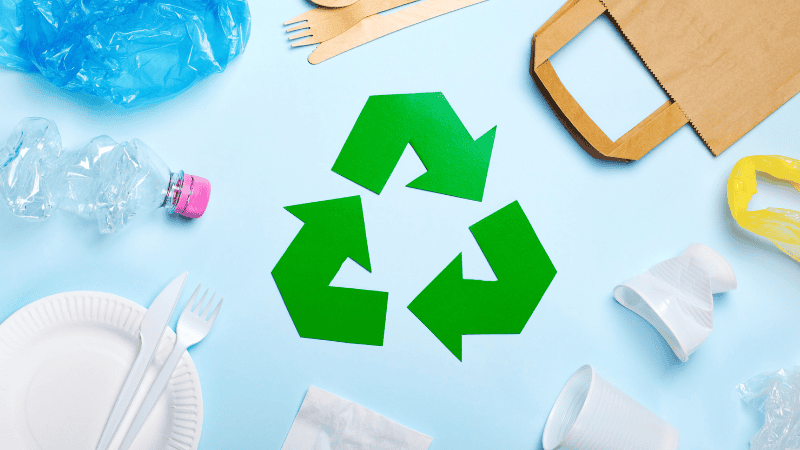
2. Choose Materials with a Low Carbon Footprint
The production and transportation of packaging materials consume significant energy, contributing to the carbon footprint. Choose materials that require less energy to produce and transport. For instance, glass containers have a low carbon footprint as they are energy efficient, recyclable, and can be reused many times.
3. Look for Sustainable Certifications
Look for packaging materials that have sustainable certifications, such as the Forest Stewardship Council (FSC) for paper products. These certifications ensure that the materials are sourced responsibly and the production process is environmentally friendly.
4. Opt for Minimalist Packaging
Minimalist packaging is a sustainable option that reduces waste and is easy to recycle. Choose packaging that is simple, minimal, and does not have unnecessary layers or components. For instance, products that use cardboard boxes instead of plastic packaging are more sustainable as they are easy to recycle.
5. Use Reusable Packaging
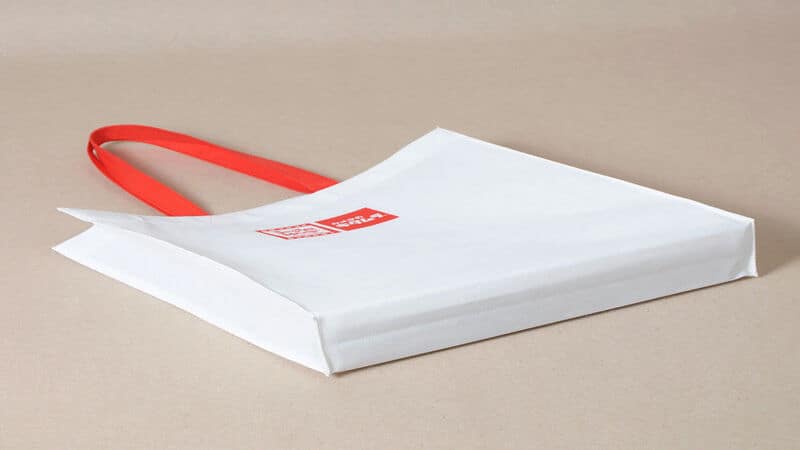
Reusable packaging is a great way to reduce waste and promote sustainability. Use glass containers, paper bags, cloth bags, or metal tins to store food or other items instead of disposable packaging. Reusable packaging reduces waste and saves you money in the long run.
Choosing a sustainable packaging material is crucial for reducing environmental impact.
By considering the environmental cost and impact, choosing materials with a low carbon footprint, looking for sustainable certifications, opting for minimalist and common packaging materials, and using reusable packaging, you can make a more informed decision and promote sustainability.
Tips for Reducing Packaging Waste in Your Home
Reducing packaging waste in your home is essential for promoting sustainability and reducing your environmental impact. Here are some tips for reducing packaging waste in your home:
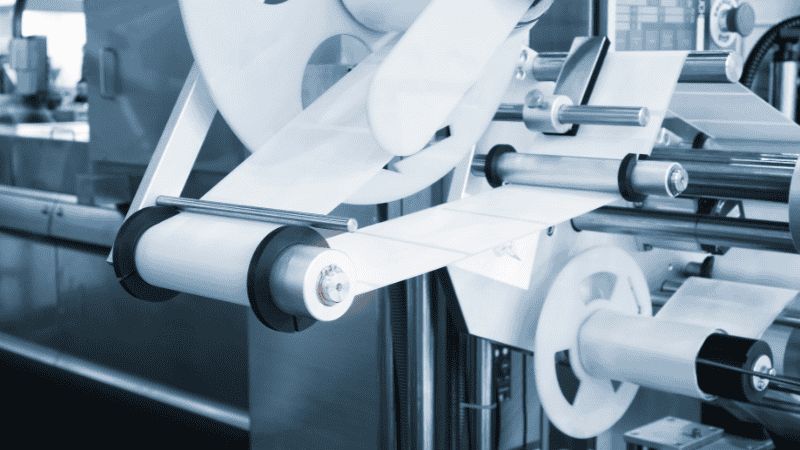
- Buying in bulk is an effective way to reduce packaging waste. By purchasing products in larger quantities, you can significantly reduce the amount of packaging waste generated from individual products. For example, buying a large bag of rice instead of multiple smaller bags can reduce the amount of plastic packaging waste generated. Additionally, buying in bulk often lowers prices, making it a more cost-effective option for consumers.
- Bringing your own reusable plastic grocery bags along to the grocery store is an easy way to reduce the use of plastic bags. Plastic bags significantly contribute to plastic waste and can take hundreds of years to decompose in landfills. By bringing your own used plastic grocery bags along, you can reduce your environmental impact and promote sustainability. Reusable plastic bags are widely available and can be found in various sizes and styles, making them a convenient option for any shopping trip.
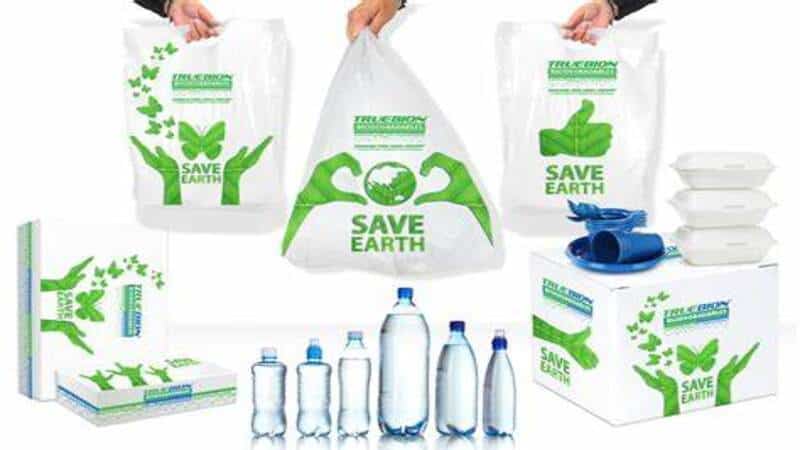
- Avoiding single-use products such as disposable plates, cotton bags, and cups can significantly reduce food packaging waste. These items are designed to be used once and then thrown away, resulting in a large amount of solid waste that ends up in landfills. Opting for reusable alternatives such as cloth napkins and plates, paper bags, stainless steel water bottles, and glass cups can significantly reduce waste and promote sustainability.
- Choosing products with reusable bags, compostable plastic, or minimal packaging can also reduce waste. Many products, such as fruits and vegetables, do not require excessive packaging, yet they often come in plastic bags or trays. Opting for reusable plastic bags or grocery bags for loose produce or products with minimal packaging can help reduce the amount of waste generated vs. plastic alone. Additionally, choosing products with recyclable packaging can help promote sustainability.
- Recycling is an essential way to reduce packaging waste. Recycling recyclable packaging materials, such as cardboard, paper, and plastic, can help reduce waste in landfills. Recycling also supports the circular economy, where materials are reused and repurposed, reducing the need for new resources.
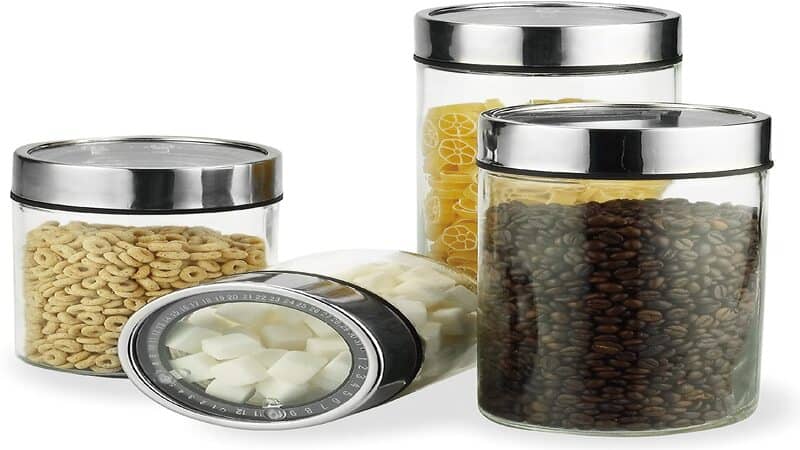
- Composting food waste is another effective way to reduce waste in landfills. Food waste generates methane gas, a potent greenhouse gas contributing to climate change. Composting food waste can significantly reduce methane emissions and promote sustainability. Composting is easy to do and can be done at home using a compostable plastic bin or outdoor compost pile.
- Choosing glass or metal containers over traditional plastic can significantly reduce waste. Glass and metal are highly recyclable materials that can be easily reused or repurposed. By choosing products that come in glass or metal containers, you can help reduce plastic waste and promote sustainability. Additionally, glass and metal containers are often more durable than traditional plastic ones, making them a longer-lasting option.
- Choosing products made from recycled materials can also promote sustainability. By using recycled content and supporting the circular economy, a manufacturing process where materials are reused and repurposed, you can help reduce the need for new resources and promote sustainability. Many products, such as paper towels, cotton bags, and toilet paper, are now available in recycled content options, making it easy to choose sustainable products.
Conclusion
In conclusion, both paper and plastic packaging have advantages and disadvantages. Paper packaging is renewable, biodegradable, and recyclable, but it is not as durable as plastic packaging and can cause deforestation.
Plastic packaging is highly durable, versatile, and lightweight but not biodegradable and can cause water pollution and habitat destruction.
When choosing packaging materials, consider the environmental impact, choose materials with a low carbon footprint, look for sustainable certifications, opt for minimalist packaging, and use reusable packaging.
Discover Paper Packing and Plastic Packaging Difference Together
Packoi is committed to providing eco-friendly, cost-effective packaging solutions that minimize waste and reduce environmental impact.
So take action and Contact us today!

Contact Our Specialists Now!
We are a one-stop shop for all custom packaging and printing solutions.




